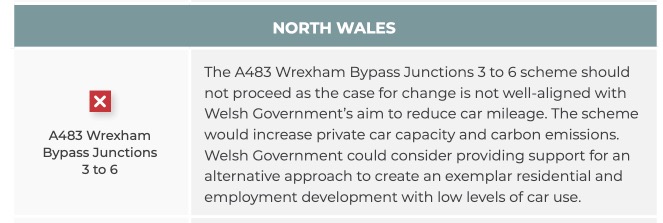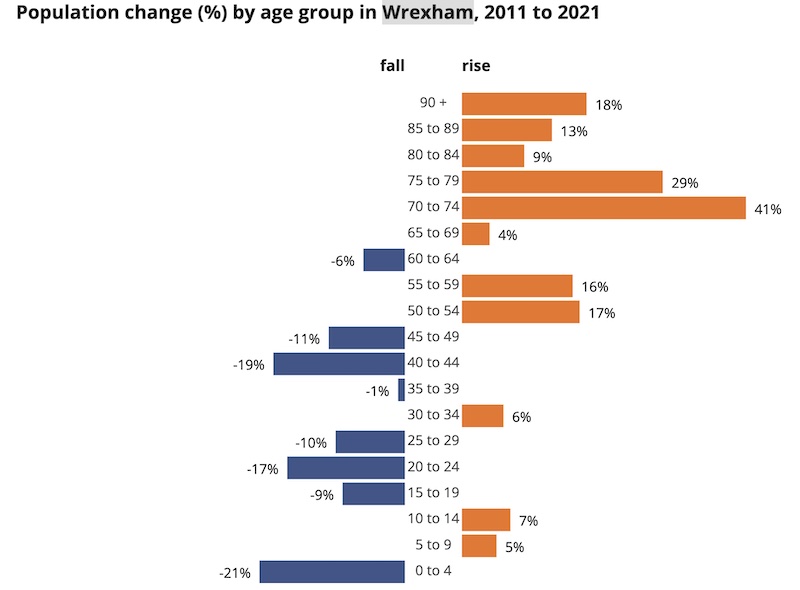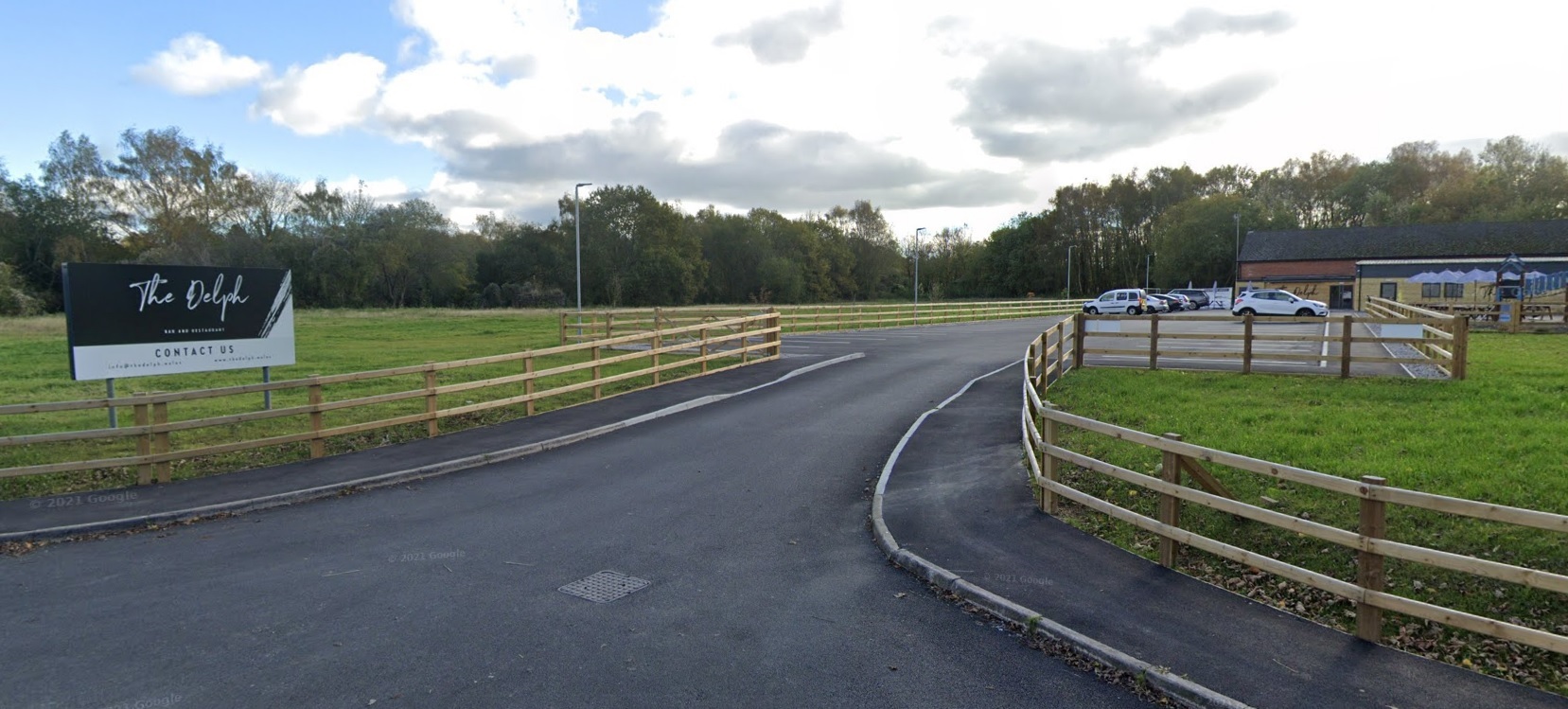Crucial 48 hours ahead of key Wrexham’s Local Development Plan vote – as legal advice circulated to all councillors

The fate of controversial plans which could lead to the development of thousands of new homes in Wrexham will be decided over the coming days.
The Local Development Plan (LDP) which has been several years in the making, aims to provide an “up-to-date, fully evidenced strategic planning framework” for the county borough – although many feel it is far from that and is infact well out of date.
If adopted by Wrexham Council it will become the blueprint from which the local authority will base future planning decisions on.
In March it was announced that Wrexham’s Local Development Plan had met the “soundness” test by the Welsh Government inspectorate.
Within its findings – which can be viewed in full here – it explains that the plan includes provision for 8,083 new homes, with a requirement to deliver 7,750 dwellings. Of those 717 will be classed as affordable housing.
The figure of 8,083 is far less than what was initially proposed in the council’s Preferred Strategy, which set out provision for 11,715 homes.
This week the Local Development Plan will be discussed by councillors twice – first at this morning’s executive board where lead members will likely agree to send the document to tomorrow’s (19 April) full council meeting.
A report due before councillors tomorrow explains: “If adopted, the Wrexham LDP will be the primary strategy and policy document against which the council will make decisions on development proposals going forward.
“It is a sound and sustainable Plan that includes a requirement to consider the ‘Placemaking’ agenda and presents a positive approach to managing the future growth that Wrexham is going to experience.
“The policies and proposals within the LDP address the County Borough’s need for new homes, jobs, infrastructure, and community facilities to support economic growth and raise standards of living.”
However it is unlikely to be plain sailing, with the LDP leaving a sour taste in many councillors’ mouths over the proposed location of a gypsy and traveller site and land allocated for housing.
In the years since the Deposit Plan was submitted for examination in 2018 there has been a global pandemic, a cost-of-living crisis and significant changes to Welsh government policy.
Below we look at some of the major changes that have taken place since the LDP was submitted:
Phosphates
During the course of the public inspection of the LDP the Welsh government and Natural Resources Wales (NRW) announced stricter phosphate control regulations in a bid to reduce pollution in Wales’ rivers.
Phosphates are naturally occurring minerals which can enter rivers via land management practices, sewerage and foul water, causing significant ecological damage.
Evidence published by NRW shows phosphorus breaches are widespread within Welsh Special Areas of Conservation (SAC), including the River Dee, where target levels have not been met.
At the time the Welsh Government said phosphate pollution poses a “serious risk” to health and must be addressed.
However this has led to a decline in planning applications being approved locally and a backlog of around 3,500 proposals “left sitting on the desk” at Wrexham Council due to the phosphates issue.
Earlier this month Wrexham Council’s leadership claimed builders and developers are starting to become wary of submitting applications altogether, with council leader Mark Pritchard stating that a decision has to be made by the Welsh government or risk bringing Wales to a standstill.
The inspectorate’s findings acknowledges that the decision by Welsh government and NRW potentially has “serious implications” for the LDP.
It raises concerns about the cost of mitigation measures on the viability of the 18 LDP sites – which would be required to minimise their phosphorus loading to the sewerage system, existing watercourses and the SAC catchment
A review carried out by Wrexham and Flintshire Councils, NRW and stakeholders such as Dŵr Cymru to create the Dee Catchment Phosphorous Reduction Strategy, the first report of its kind in Wales.
The strategy found that mitigation measures such as surface water separation could be used – with the cost of mitigation apportioned according to how much phosphorus the proposal generates.
Amendments to Policy NE6: Waste Water Treatment and River Water Quality could also allow new development to go ahead only where there is no adverse impact on the “integrity of the River Dee and Bala Lake SAC.”
The inspectorate’s report also states that the Welsh government has “recognised these LDP examinations as exceptional cases” and that “the fine grain detail of required mitigation measures cannot be achieved now, or is not necessary at such an advanced stage of plan preparation.”
As a result the inspectorate concludes: “We attach significant weight to Welsh government’s position statement.
“All things considered, we are satisfied that, despite the uncertainties thrown up by the need for phosphorus mitigation, given the circumstances the allocated sites represent the best chance of delivering the identified housing requirement.”
Roads Review
In February Deputy Climate Change Minister Lee Waters released the findings of the Roads Review – a study which had been commissioned amid concerns that “some road investment schemes in development were no longer consistent” with Welsh government policy.
The findings came as a shock to many, with the independent Roads Review Panel concluding that only 15 of the more than 50 planned projects would go ahead.
It included the axing of the long-awaited improvements of junctions three to six on the A483.
The works had been on the cards for several years with Ken Skates MS announcing back in 2018 funding for congestion improvements.
Modifications to the A483/A5 Halton roundabout lying to the north-east of Chirk are also not being taken forward.
Speaking in the Senedd last month Mr Waters said “we will not get to Net Zero unless we stop doing the same thing over and over”.
He later went onto say that the Welsh government is “raising the bar for where new roads are the right response to transport problems.”

The improvements at junction 4 are mentioned several times during the planning inspectorate’s final report, with land at lower Berse Farm on Ruthin Road seen as a key strategic site for housing.
It is estimated that 400 homes can be delivered during the plan period, following completion of the works to junction four. However the land has space for a minimum of 1,500 new homes and “associated community uses.”
The inspectorate noted in its findings that Redrow, which will likely develop homes on the land, had developed an improvement scheme “which would have significant capacity benefit to Junction four allowing it to operate with some reserve capacity at least during the afternoon peak time with all of the proposed 1,500 dwellings in place.”
The developer argues that, with the “improvements proposed in the assessment in place, there are no highway capacity reasons to restrict the number of dwellings that could be developed on this site over the LDP Plan period or in advance of the wider improvement scheme.”
In tomorrow’s report, David Fitzsimon, Wrexham Council’s Chief Officer Economy and Planning, states: “The Inspectors conclude that development from the site could progress without requiring Welsh Government investment in Junction 4 to release capacity.
“They gave considerable weight to a Transport Assessment (TA) submitted by the developer that includes proposals for an improvement scheme.
“The TA found that these improvements would have significant benefit to Junction 4.
“The references to the need for highway improvements at Junction 4, which are not specific to those to be delivered by Welsh Government, are therefore retained in policy.”
Population Changes
Wrexham’s population growth has slowed in recent years – something that Wrexham Council and Welsh government were warned of back in summer 2020.
The 2021 Census revealed a marginal increase in people living in the county borough since 2011, rising just 0.2% from 134,800 to 135,100.
This is lower than the overall Wales increase, with Wrexham seeing one of the lowest population growths in Wales along with Powys and Merthyr Tydfill.

The Census described Wrexham as being the “tenth least densely populated of Wales’ 22 local authority areas, with around two people living on each football pitch-sized piece of land”.
The figures also show a large increase in the number of over 65s living in Wrexham and across England and Wales as a whole.
Wrexham has seen a higher increase in the over 65s than the all Wales average, with 19.5% now classed as being in that age group.
However this has coincided with a drop in the number of children being born, indicating why the population growth has slowed.
There has been a drop of almost four per cent in those aged between 15-64 and 3.6% decrease in children under the age of 15.
Overall across the county borough 17.2% of the population is made up of under 15s, 62.5% of 15-64 year olds and almost 20% of over 65s.
Local issues such as the health service, gypsy and traveller sites, education and the local economy are also expected to form a large chunk of the debate over the next two days.
If a majority of councillors fail to back the adoption of the LDP at tomorrow’s meeting, it could leave the council at risk of a Judicial Review, with Mr Fitzsimon warning that “if such a challenge was to succeed, a Court could make a binding order requiring the Council to comply with its duty to adopt.”
There is also the risk that the Welsh government could intervene and impose LDP.
As a result councillors are being strongly advised by the senior officer to adopt the plan – however it is unlikely that it will be that plain sailing, with previous LDP debates seeing serious concerns raised by councillors.
In a further move legal advice from Kings Chambers dated Friday was released to councillors last night, which would appear to give absolute clarity and concurring with the Inspector view on if a junction improvement is required to enable a key site.
The relevant section is below, with the definitive “Yes” :
The senior council officer disagrees with that reading of the verdict, writing to councillors with a copy last night, “I appreciate that some of you have expressed concerns about the Plan; not least following the announcement from Welsh Government on 14 February that the major infrastructure improvements to road junctions along the A483 will not be taking place. However, the Inspectors appointed to examine the Local Development Plan have concluded that with localised highway improvements (which would be paid for by developers), our road network has the capacity to accommodate the growth and development outlined within the Plan to 2028. We have taken Counsel Advice which confirms this to be the case, which I attach for your information.”
The Officer also points out, “You will note that the Counsel Advice also considers the matter of the statutory duty to adopt the Local Development Plan and the implications of not doing so”.
The advice on that point reads as follows, which could provoke an interesting test in local democracy:
Therefore, where inspectors have recommended adoption (either with or without modifications), the effect of regulation 25 is that a local planning authority must adopt the plan within 8 weeks of receipt of those recommendations and the inspectors’ reasons and cannot avoid doing so by withdrawing the plan unless the recommendation is overruled by a direction from the Welsh Ministers. It follows that the Council cannot refuse to adopt the LDP unless such a direction is given.
We have long pondered what happens during pay increase reports when they are ‘noted’ by a raise of hands, which is a vote but not. (Below tweet from 2018 pay debate)
We have been told Councillors basically can’t not note this report, so if all Cllrs were subject to an unlikely skiing accident in the next few minutes which temporarily restricted arm movements… they would still have to raise their hands to note the report? 🧐
— Wrexham.com (@wrexham) March 28, 2018
It is unclear what would happen if the Full Council votes down the LDP, yet are apparently unable to refuse it.
It also calls into question the entire process, and the image portrayed to the people of Wrexham that there was an element of democracy to the plans adaptation, and a position that has been stated several times that effective it ‘goes back’ to Welsh Government – the latter supported in part by the new advice:
Thinking democracy occurred locally, earlier this month Wrexham.com asked Cllr Pritchard if there would be a free un-whipped vote in his Independent group.
Cllr Pritchard said:“We have a free vote on everything, we don’t have whips on votes and everybody from the Independent group is entitled to vote on the night, any way they want. I think that’s important.
“With regards to my voting, I will keep my opinion to myself until the night and I think that’s important and I think most members will do that.”
The LDP will be considered by the executive board at 10:30am this morning and again at full council at 4pm tomorrow (Wednesday 18 April). Both meetings will also be webcast live on the Wrexham Council website.
Spotted something? Got a story? Email [email protected]













